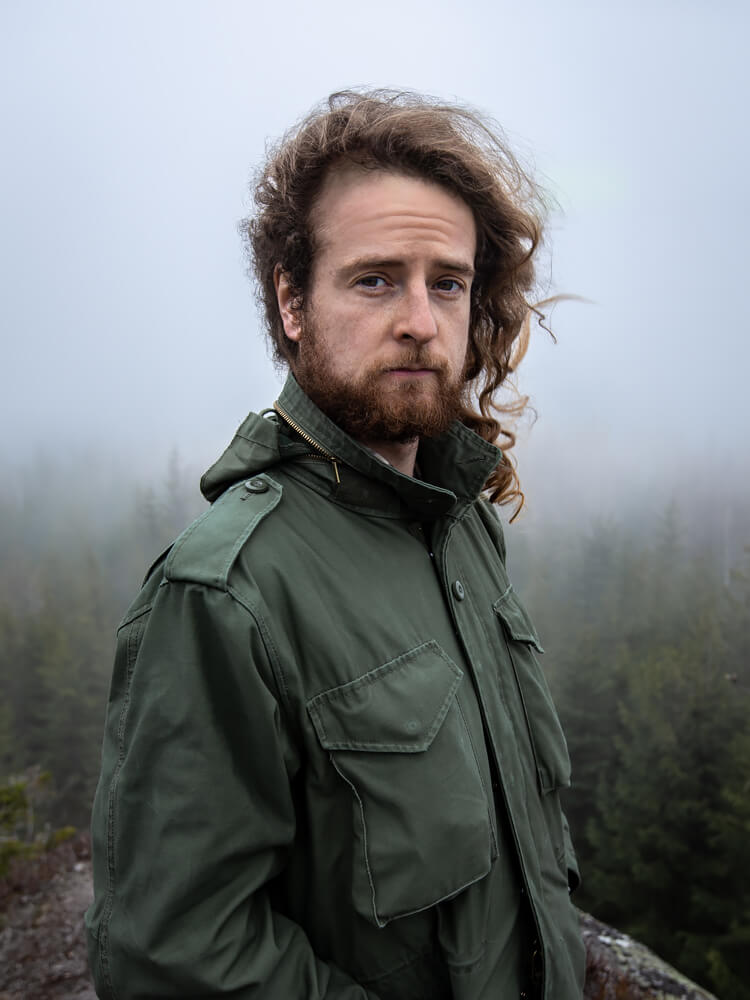Amadeusz Świerk (born in 1995) is a documentary photographer based in Wrocław, Poland. Amadeusz
strives to be an honest witness of the world. His work is often oriented on minorities – social, ethnic,
religious and based on genuine experience of other human and his culture.
Interested in ethnicity and natural way of living, he has done projects about Iranian nomads and informal
subculture of people escaping society grown around wooden hut located in Polish mountains. Currently he is
working on projects about a (in)famous district in the small town of Legnica, opioid addicts and personal,
about his family.
The Miracle District
The story starts in a middle-sized town of Legnica, located in the southwest of Poland. It should have been
unremarkable, but after World War II it had the dubious pleasure of stationing some 60,000 Soviet soldiers,
who more or less dictated the town's life.
During these difficult times, which ended very late in 1993, a small district called Zakaczawie (named from
the local river) incidentally became a refuge for Poles' native life. Among the families of Polish railwaymen
and strong Romani community relocated into the district by Communists, small businesses, cafes, pubs and
cultural venues thrived, despite the dark shadow of the Soviet garrison.
When the Curtain fell and the Soviets finally went away, the town of Legnica finally breathed a sigh of relief.
Zakaczawie district wasn't especially lucky though. It's being left out by dynamics of Polish capitalism,
omitted by investments and falling into disrepair.
The ''Miracle District'' nickname of Zakaczawie gained a bitter and ironic edge, but generations of its citizens
still retain a strong sense of community. There's crime, poverty and turbulent biographies being written by
commercial exclusion, but many people actively decide to stay there despite the challenges. Contemporary
Zakaczawie is a living witness of the winds of change, the whims of history putting the social microcosm of
its citizens to new tests. It's not easy for them, but they have to live with it, and they do, mostly by simply
staying together.
This project aims to show that among the very visual poverty and dilapidation of the Miracle District, there
are humans - families, friends, neighbors - trying to live their best. The author spent two years between
them to go deep beyond the grim appearances, to understand these people as fully as possible, to become
a witness - and to show to the world - their everyday, colorful lives, giving them an outward voice.
The Miracle District
The Shack
Hidden among the scenic Karkonosze mountains in southwestern Poland, deep in the woods and well away from the popular tourist trails, The Shack – as its dwellers tend to call it – is a secret meeting place for a special bunch of people. Despite the lack of electricity and internet, every weekend, regardless of the season, The Shack is brimming with trekkers from various walks of life, who typically don’t have the opportunity to meet or interact. They seek shelter from social conventions and develop their own, unique and intimate, small-scale society and culture.
The Shack is a place with rich traditions. Located off the beaten Karkonosze tourist trails, since the 1970s it has been popular with various groups of non-conformists. Hippies flocked there to escape the oppression of the Communist authorities. During the political transformations of the 80s, some of them joined Fighting Solidarity (Polish anti-Soviet and anti-communist underground organization), and The Shack became a print-and-distribution center of subversive leaflets.
Throughout the years, both political and non-political visitors created a rich set of rules, The Shack’s unwritten code that acts as a tool for introducing newcomers and keeping a low profile. Breaking the code is punished by a system of humorous tasks. Over time, regulars started families and made professional careers, but they handed over The Shack’s traditions to the younger generation of visitors.
There is a position of Shack Keeper, who stays there permanently. He lives alone in the wild, taking care of the building and getting along with its guests. He’s the unofficial leader within The Shack. The Keeper usually changes every few years. The Shack somewhat changes too, as Keeper’s personality influences the atmosphere.Today most Shack visitors come on weekends to escape civilization and relax for a bit. The flock of guests increased significantly during the pandemic; people tried to compensate for the scarcity of face-to-face contacts. The sense of belonging is built by working and eating together, among strangers. Guests forage wood from the forest and chop it, prepare meals on the wood-fired stove, share them with others by candlelight, play guitar, sing and dance – all without modern disturbances of internet and smartphones. The Shack dwellers want to experience the traditional way of life and stay among nature. Most appear occasionally, but there are always some who visit it regularly and enjoy it together.
